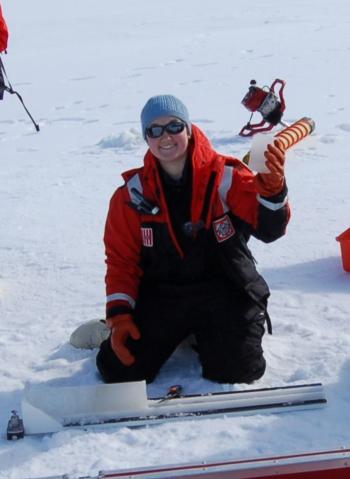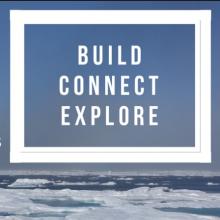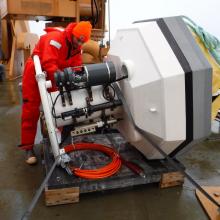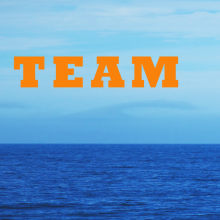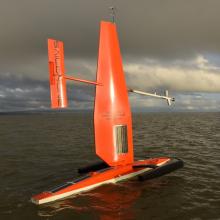Team Highlight: Dr Jessica Cross
ITAE Principal Investigator Dr. Jessica Cross talks about her role with ITAE
Dr. JESSCIA CROSS is a is a Research Associate at the Pacific Marine Environmental Lab through the University of Alaska Fairbanks specializing in complex carbonate biogeochemistry in the Arctic. She works to synthesize dissolved carbon and alkalinity measurements, biological productivity and respiration rates and volumes, sea-air CO2 flux, and hydrographic observations to address ocean buffering capacity, carbonate mineral precipitation and dissolution, and conservative mixing signatures. To learn a bit more about Jessica, we asked her a few questions about her role with ITAE and how she became interested in science.
What is your role with ITAE? I am one of the Principle Investigators that help to shape the ITAE project, by identifying how new technologies might help us address important, unanswered science questions in the Arctic. I focus on new sensors, platforms, and techniques for carbon cycle science.
What is unique about this project? What makes this project unique for me is its scale: In addition to our Saildrone mission this summer, ITAE works with 15 new types of technology. This wouldn't be possible without our excellent engineering team and facilities here at PMEL, or our strong collaborations with the NOAA Cooperative Institutes. It's also a big advantage: by developing and testing these technologies together, the process is actually much more efficient. It's hard work, but I love the high-energy environment it creates!
How did you first become interested in what you do? I grew up in Florida, but not on the beach-- we lived about 30 miles inland, so I'm more from the swamp. (One year, our post office sank into the ground.) To find out more about the seaside Florida I didn't know so well but had heard so much about, I attended an Oceanography camp for eighth grade girls co-sponsored by the University of South Florida and Eckerd College. I remember mapping the beach for the first time, and being amazed that winds, water, and even plants shaped how sand dunes formed. We did a few experiments on board a small research vessel, too. Fortunately, I learned for the first time that I didn't get seasick easily, and I insisted on staying up late to take samples with the rest of the team. I loved seeing the experiments in the small lab on board! It's been a long journey from Florida, to Alaska, and now to Seattle, but oceanography has been there since that first experiment.
Would you like to learn more about Jessica? Email us your questions!

